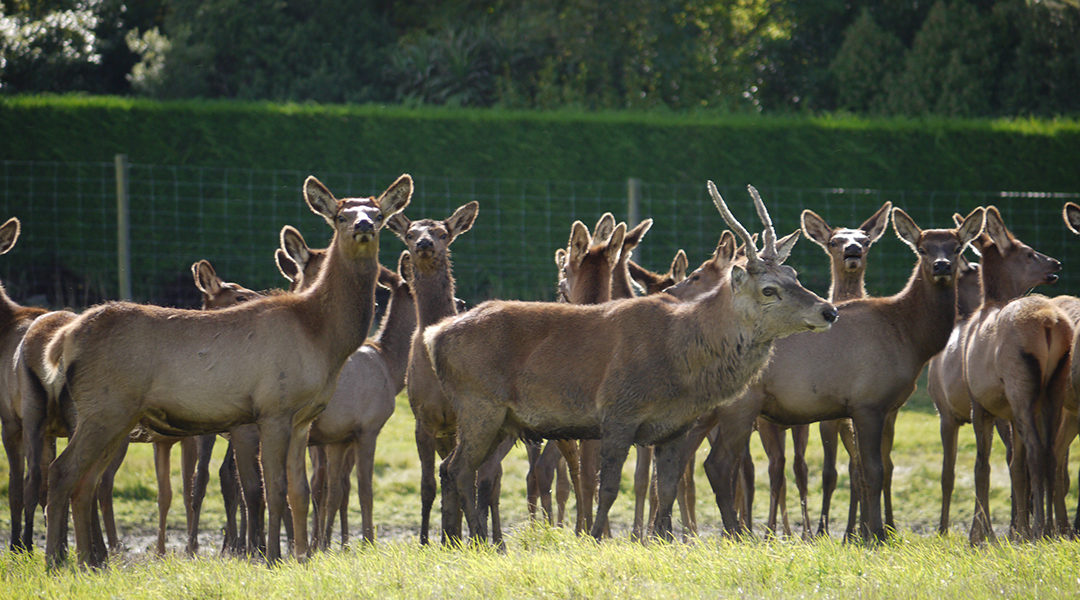
It is widely known that many areas in New Zealand are deficient or low in naturally available copper, and survey results show that nearly 80% of deer farms frequently supplement their herds with copper on a routine basis.
However, we need to be aware that both too little and too much copper can cause health issues. There is some evidence now that many farmed deer are being given these supplements unnecessarily. Not only can this be dangerous to the deer`s health, but also to the farmer`s pocket, and it can increase an already demanding workload. Conversely, supplementation can be very economic if it helps prevent even a small number of animals from having clinical disease associated with copper deficiency.
The most common and often described signs of deficiency are the dull, faded-looking coats, weak bones (increased fractures in young stock) and swayback. Low copper will also lower the immune system so that other diseases and debilitating conditions may increase in frequency (such as yersiniosis and parasitism). Trace element status should therefore always be checked when investigating poor performance and/or an increased disease frequency. Wapiti-type animals have a higher demand for copper than red deer.
It is important that we test beforehand in order to establish the necessity for supplementation, and then also afterwards (if possible) in order to assess the response to supplementation and to formulate a plan for timing and product use (capsules vs injection) going forward.
We see a seasonal effect on the copper status of deer, which is important for considering the timing of testing, interpretation and supplement. Copper levels will be at their lowest in late winter/spring and will then rebuild again in the summer from pasture and legume intakes. Copper is stored in the liver and then buffers levels supplied into the bloodstream, so testing livers gives us the best indication of reserves. This can be done by biopsy on farm either pre-mating (when levels should be at their highest) or in the autumn to check reserves going into the winter (from which they will deplete). Alternatively, we can arrange a sample to be tested at the deer slaughter plants (known as an Optigrow Test), usually on cull hinds after scanning or prime weaners, to check current supplementation programmes.
Bloods can also be taken for copper status, and this is less stressful on the live animals, but it only gives us a “snapshot” of the copper currently in the bloodstream and does not tell us the reserve levels. It can be useful when investigating poor performance, fawns at weaning or in the spring when levels are at their lowest.
Farm management practices and crop use will alter the copper status, either through a primary deficiency where the plants are grown on deficient soils (or high soil pH / lime use) or a secondary deficiency where high molybdenum and sulphur can antagonise the animals’ absorption of copper. It is therefore important not to assume that every year will be the same, and regular checks are needed especially if using different crops. Higher soil intakes such as fodder beet will have lower levels, whereas chicory and palm kernel extract (PKE) are known to have higher levels of copper – but these levels are not always consistent.
Direct supplementation is the most effective method whereby each animal is getting a known amount of copper and will overcome the antagonists if present. This can be in the form of an injection or an oral bolus, each with its own benefits and risks. Copper in these forms is a restricted veterinary medicine, so proper consultation is needed with your vet to formulate a plan for testing and safe use. Copper fertilisers may be of use in primary deficiencies only.
Please talk to your Vetlife vet to discuss your current programme and monitoring. Avoiding unnecessary supplementation and potentially overdosing young animals is as important as identifying deficiencies in order to ensure optimal performance.